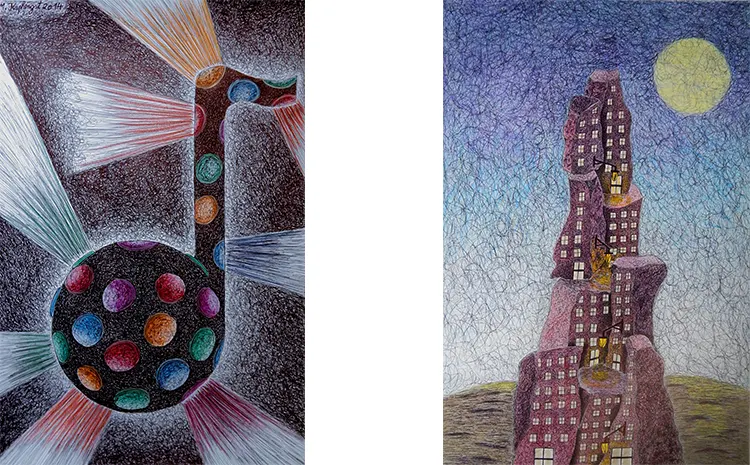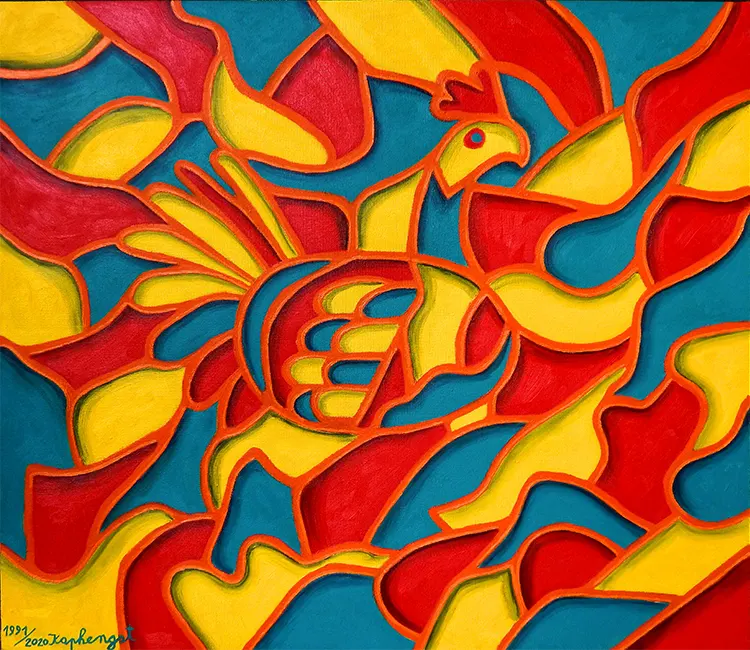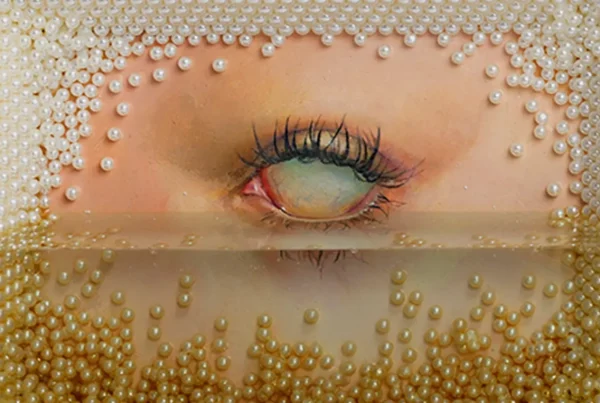“I make art to express myself and not for the academy.”
The Unconventional Genesis of a Visionary
Michael Kaphengst‘s journey into the realm of art is as unconventional as it is inspiring. Born into challenging circumstances in Germany, Kaphengst’s early life was far from ordinary. The separation from his mother at birth, due to her overwhelming circumstances, set the stage for a childhood filled with complexity and hardship. His mother, battling severe manic depression and the financial strain of single parenthood, struggled to maintain a sense of normalcy for her family. Despite these adversities, she instilled in Kaphengst a profound appreciation for the arts, particularly through her exceptional talent in playing classical music. This early exposure to the beauty and discipline of music would later influence Kaphengst’s artistic direction, embedding a sense of passion and resilience into his work.
Kaphengst’s eventual reunification with his mother at the age of ten marked a turning point in his life, introducing him to a world where creativity could serve as both escape and expression. The challenges of his upbringing, including dealing with neurodermatitis and asthma, propelled him toward various physical activities, yet it was the realm of art that ultimately captured his heart. The death of Salvador Dali, coupled with a burgeoning interest in surrealism, ignited a flame within Kaphengst. This led him to explore painting and drawing, embarking on a self-taught journey through art courses and eventually deciding to train as a graphic designer. His path was not just about discovering art; it was about uncovering a means to communicate his complex emotions and thoughts, shaped by a life of adversity and triumph.

Michael Kaphengst: From Side Projects to Surrealistic Success
The evolution of Michael Kaphengst as an artist was not a straightforward path but rather a gradual realization of his calling. Initially, art served as a side endeavor, a means to channel his creativity without the explicit aim of becoming a professional artist. Kaphengst’s early career was marked by a hands-on approach to showcasing his work, from organizing exhibitions in non-traditional spaces to engaging directly with the local community. This phase was crucial in teaching him the realities of the art world and the resilience required to navigate its challenges. His determination was further tested by personal struggles, including the financial hardships faced due to his father’s refusal to provide support, which Kaphengst courageously overcame through legal action.
This period of exploration and self-discovery was instrumental in shaping Kaphengst’s unique artistic voice. His encounters with various art movements, especially surrealism and pop art, informed his distinctive style, which he terms “consumptive surrealism.” This approach goes beyond the aesthetics of consumerism explored by pop art, delving into the profound impact of consumer objects on our psyche and society. Kaphengst’s journey underscores a relentless pursuit of self-expression, driven by a deep-seated need to make sense of his experiences and the world around him. Through his art, he invites viewers into a dialogue about consumption, identity, and the surreal landscapes of our collective consciousness.

The Philosophical Palette: Consumptive Surrealism and Beyond
Michael Kaphengst’s artistic narrative is a rich tapestry woven from his life experiences, philosophical inquiries, and innovative techniques. At the heart of his work lies the concept of “consumptive surrealism,” a term that encapsulates Kaphengst’s critical examination of consumer culture through a surrealistic lens. This approach is not merely an extension of pop art’s fascination with consumer goods; it is a deeper, more introspective exploration of how these objects shape our identities and experiences. By integrating consumer items into surreal motifs, Kaphengst challenges viewers to reconsider the ordinary, pushing the boundaries of how art can influence and reflect societal values. His journey into art was not just about mastering techniques but about questioning the world around him and expressing these inquiries through his unique visual language.
Kaphengst’s foray into “linearism” and the creation of his “fencing pictures” further demonstrates his relentless pursuit of innovation. Drawing inspiration from pointillism and the avant-garde actions of Niki De Saint Phalle, he sought to reinvent the canvas, using unconventional tools such as a rapier to apply paint. This method, dubbed “absolute linearism,” transcends traditional painting techniques, offering a fresh perspective on the creation of art. Kaphengst’s willingness to experiment and disregard academic norms underscores his belief in art as a means of personal expression rather than a pursuit of institutional validation. Through these explorations, he not only develops a distinct visual style but also invites dialogue on the essence of creativity and the artist’s role in society.

Michael Kaphengst: Navigating Distractions and Discoveries
For Michael Kaphengst, the act of creating art is both a refuge and a reflection of his inner world. His workspace is not just a physical location but a mental and emotional sanctuary where he can escape the pressures of everyday life and engage deeply with his creative impulses. Kaphengst views art-making as a centering process, one that allows him to explore and express his thoughts and emotions freely, without the constraints of stress or external expectations. This approach to art as a therapeutic and introspective practice highlights the importance of the creative process itself, beyond the final artwork. Kaphengst’s ability to immerse himself in his work, allowing his creativity to flow unimpeded, is a testament to his commitment to authenticity and personal growth through art.
The intersection of Kaphengst’s artistic and acting careers reveals a multifaceted approach to creativity. His unexpected journey into acting provided a significant, albeit temporary, diversion from his artistic pursuits, offering new insights into the performative aspects of self-expression. Despite the challenges of surviving as a freelance actor, this experience enriched Kaphengst’s understanding of narrative and performance, elements that subtly permeate his visual art. The blend of visual and performing arts in his life underscores the interconnectedness of creative disciplines and the myriad ways in which life experiences can inform and enhance artistic expression. Kaphengst’s story is a compelling reminder of the power of art to transcend traditional boundaries, serving as a vehicle for exploration, expression, and connection.






